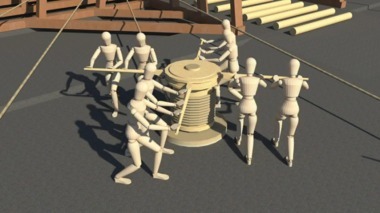Construction Cranes in Ancient Greece and Rome
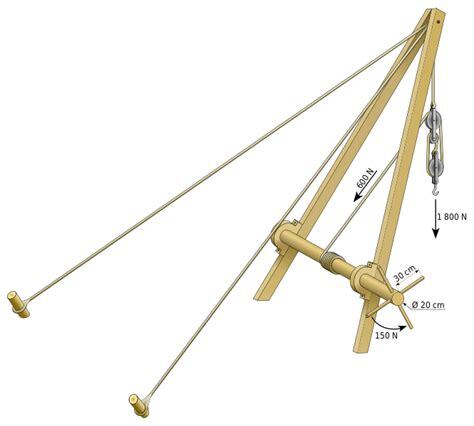
Lecture 16: Leveraging Human Power – Cranes
Understanding Greek and Roman Technology: From the Catapult to the Pantheon
Dr Stephen Ressler (2013)
Film Review
According to Ressler, the use of construction cranes began in the 6th century BC. He describes the crane, originally developed by the Greeks, as a compound machine combining sever simple machines. All the specific designs he presents are described in book 10 of Vitruvius’ De Architectura.*
Sheer Leg Craine
The sheer leg crane consists of two posts in an inverted V supported by two backstay ropes. A windlass is used to operate the lifting rope. The latter combines two simple machines: the shaft is a wheel and axle, while the hand spikes used to turn it are levers.**
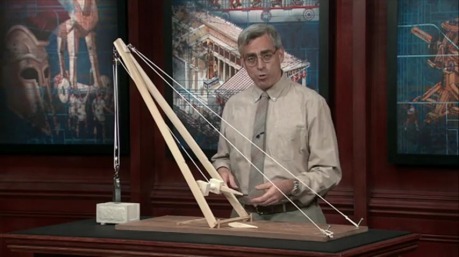
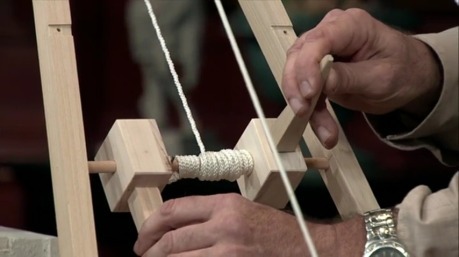 A typical Roman sheer leg crane required two men to turn the windlass, one operating each hand spike.
A typical Roman sheer leg crane required two men to turn the windlass, one operating each hand spike.
The hook at the end of the the the lift rope attached to a Lewis Bolt, consisting of a three-piece iron wedge, which laborers inserted into a bolt hole in the stone block.
 The sheer leg crane also relied on a block and tackle system made of two pulleys, one at each end of the lifting rope.
The sheer leg crane also relied on a block and tackle system made of two pulleys, one at each end of the lifting rope.
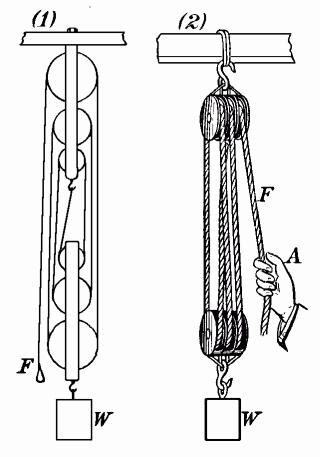
Treadwheel Crane
Operating much like a hamster wheel, the treadwheel crane used a treadwheel in place of a windlass. This produced more torque (enabling it to lift heavier objects a longer distance) because it was larger and operators could apply their full body force. It was turned by one or two men walking inside the treadwheel.
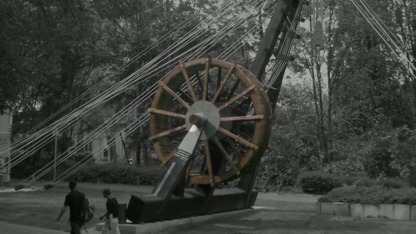 A classical era sculpture discovered in Germany depicts five men powering a treadwheel by walking inside it.
A classical era sculpture discovered in Germany depicts five men powering a treadwheel by walking inside it.
Ressler also discusses the crane system used by Roman engineers to build Trajan’s column, a 126 foot tower made up of 59 ton marble drums.

Archeologist Lynne Lancaster has created a reconstruction of the temporary wooden scaffolds she believes were used to construct the tower. The scaffolds supported two parallel shafts, one to lift the marble blocks and the other to lower them into position.
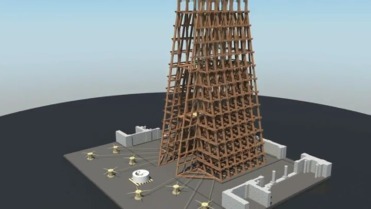 Each shaft supported a crane suspended from wooden trusses. Each crane relied on eight sets of lifting ropes extending out to eight capstans,*** each turned by eight people.
Each shaft supported a crane suspended from wooden trusses. Each crane relied on eight sets of lifting ropes extending out to eight capstans,*** each turned by eight people.
*Written in the first century AD, De Architectura is the sole remaining classical text on architecture and engineering. See Technology in Ancient Greece and Rome.
**See Technology in Ancient Greece and Rome footnote [2]
***A capstan is a windlass reoriented vertically.
Film can be viewed free with a library card on Kanopy.
https://www.kanopy.com/en/pukeariki/watch/video/146712
The Most Revolutionary Act
- Stuart Jeanne Bramhall's profile
- 11 followers



